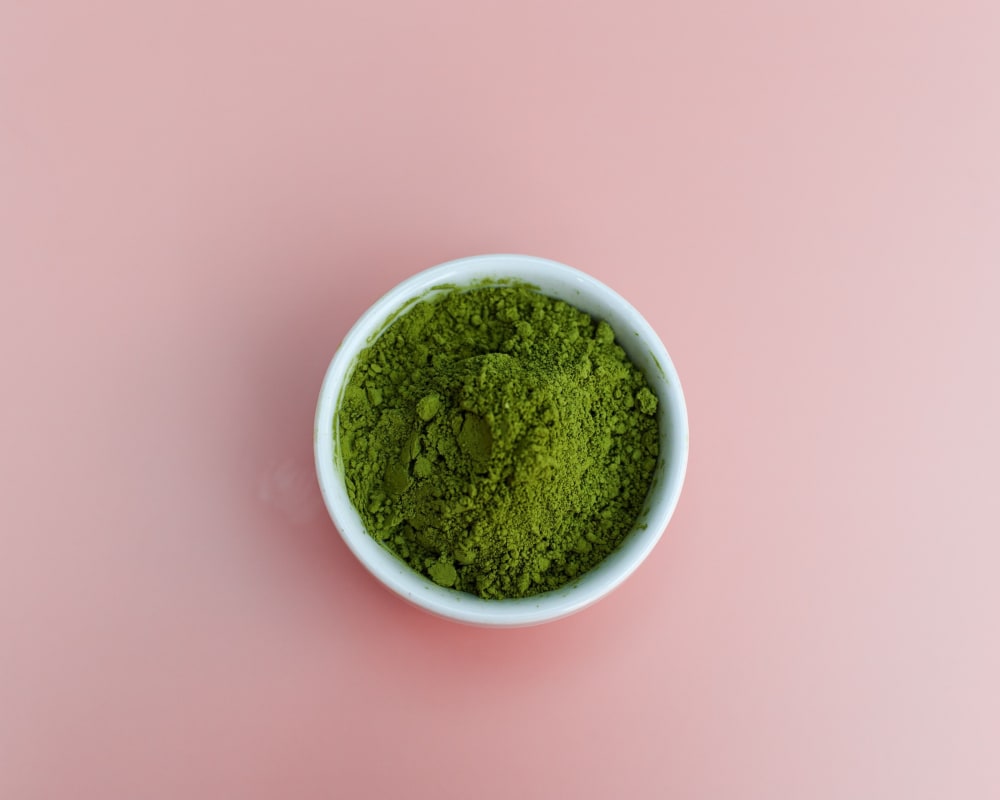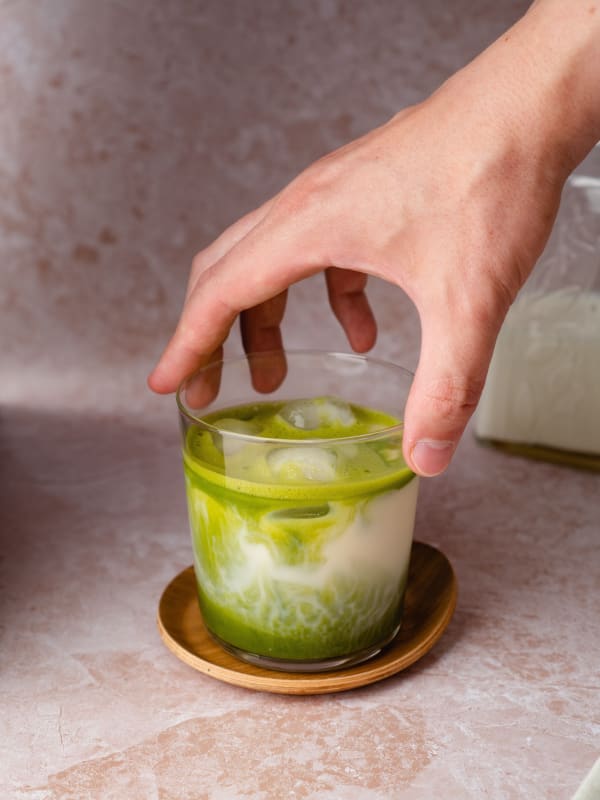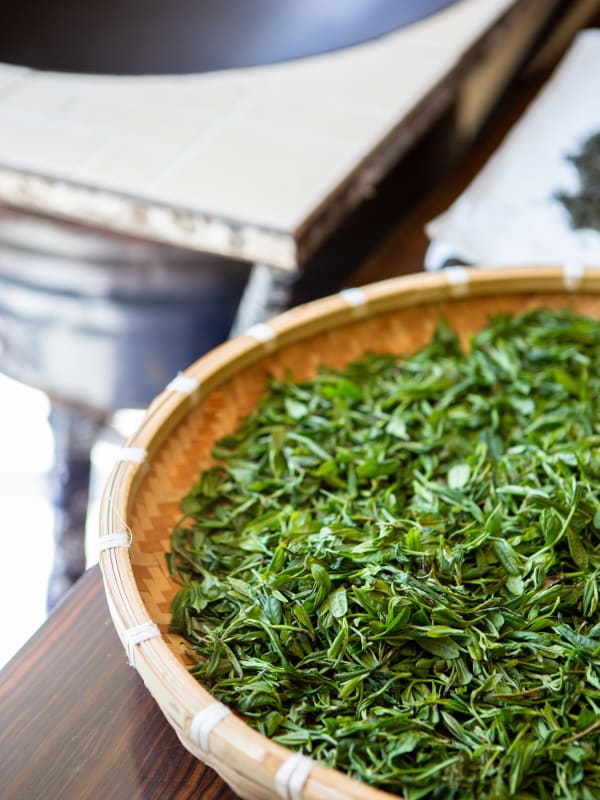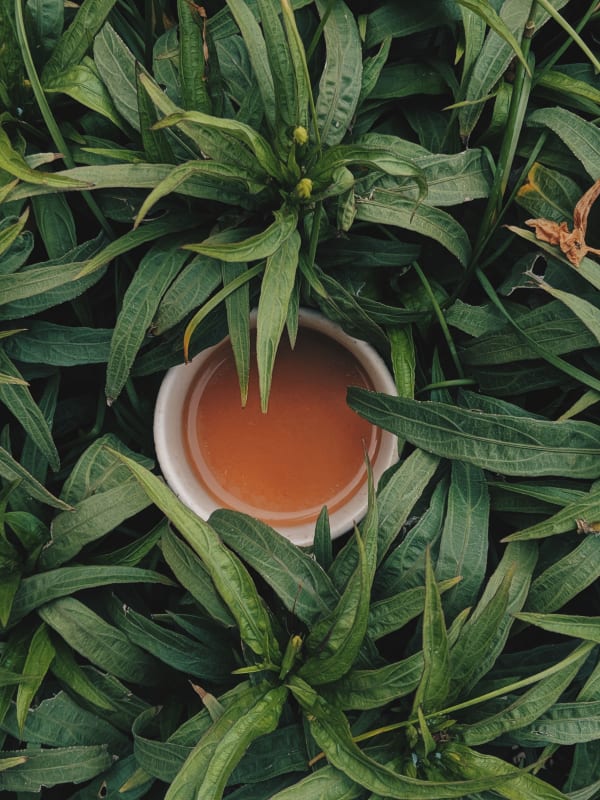Popular Conditions & Diets

Whether black, green, or oolong, it all comes from the same plant, Camellia sinensis, but green is the unoxidized, un-fermented version.
There is much to be said about Camellia sinensis, also known as "cha," "chai," and most commonly, "tea." With thousands of years of history, rich culture, and daily consumption by hundreds of millions of people, the benefits and impact of this astonishing plant are undeniable.
Long before the advent of acai bowls, green tea had a reputation as a healthy alternative to coffee, carrying vague connotations of longevity. But is green tea really all that? And if so, is it time we replace our boring, antiquated notion of it as something generally "good for you" with a more specific understanding of what makes it so special? The answer to both questions is an unqualified Yes! In this short article, I will argue that even if one were heedless of tea's long and fascinating history, an honest nutritional consideration of it alone would yield the conclusion that it is indeed a remarkable drink.

The first-ever sip of tea was drunk by Emperor Shennong in 2737 BCE, a towering figure of Chinese national identity whose biography is a blend of fact and myth. Among many other transcendent accolades, Shennong is credited with inventing agriculture and traditional Chinese medicine.
Looking through a clear glass of sencha or genmaicha, it might seem like there isn't much there but the subtle imprint of a grassy hue on otherwise plain water. But as with all highly functional foods, the chemical profile of the solution we call "tea" is detailed and complex. In other words, it consists of a long list of different ingredients that work together in very cool and intricate ways.
Quercetin, rutin, chlorogenic acid, vitamins, trace minerals, chlorophyll and caffeine, can be found in steeped green tea. But the real distinction to which most of its health benefits are credited is found in the diverse family of phytochemicals known as polyphenols.
These powerful antioxidants make up a complete 30 per cent of the dry weight of green tea. Dominant among them are catechins, a unique subtype of polyphenol featuring members like epicatechin and epigallocatechin. The amount and type of these catechins vary with different geography and growing and processing methods. Still, they are categorically much more abundant in green tea than in any other. Miniscule amounts can be found in cocoa, red wine, and some fruits, but Camellia sinensis is absolutely loaded with them; these catechins represent almost half of all soluble solids that pass from the leaves into the water!

Among all the Camellia polyphenols, one reigns indisputably supreme. And that, of course, is epigallocatechin-3-gallate, mercifully acronymed EGCG. The most active and abundant of all green tea catechins, EGCG continues to draw tremendous attention for its anticarcinogenic activity.
Did you know that there are more than 35,000 published studies on the health benefits of green tea?
It benefits cardiovascular health, blood sugar and insulin balance, healthy weight control, and cognitive and oral health. It keeps your metabolism running smoothly, protects your heart and brain from age-related decline, and keeps your breath smelling its best.
A powerful systemic inflammation fighter, drinking green tea hits the 'on' switch for the production of major anti-inflammatory cytokines. Catechin metabolites cross the blood-brain barrier and help to quell neurological inflammation. Combined with their antioxidant effect, green tea catechins protect existing brain cells and even cause neurogenesis- the birth of new brain cells! But the anti-inflammatory benefits can be system-wide, showing promise for many types of chronic illness, including autoimmune conditions.

The powerful compounds in green tea leaves are even more concentrated in matcha powder, pretty much across the board. This goes for EGCG, vitamin C, and theanine - the superhero of relaxed focus.
Cabrera, C. (n.d.). Beneficial effects of green tea-A Review. Taylor & Francis Online. Retrieved November 15, 2022, from https://www.tandfonline.com/doi/abs/10.1080/07315724.2006.10719518
Chacko, S. M., Thambi, P. T., Kuttan, R., & Nishigaki, I. (2010, April 6). Beneficial effects of green tea: A literature review - chinese medicine. BioMed Central. Retrieved November 15, 2022, from https://cmjournal.biomedcentral.com/articles/10.1186/1749-8546-5-13
Farkhondeh, T., Pourbagher-Shahri, A. M., Ashrafizadeh, M., Folgado, S. L., Rajabpour-Sanati, A., Khazdair, M. R., & Samarghandian, S. (2020). Green tea catechins inhibit microglial activation which prevents the development of neurological disorders. Neural regeneration research, 15(10), 1792–1798. https://doi.org/10.4103/1673-5374.280300

Legend has it that one fateful day, a wayward leaf drifted into his cup of hot water, and without notice, he drank the spontaneous infusion. Like the toppling apple that inspired Isaac Newton's epiphany on gravity, this falling foliage would permanently change the course of history. Tea was born in the epoch-shifting split second when that warm liquid hit Shennong's royal tongue.
For hundreds of years, Green tea has most commonly been used for its medicinal benefits, but that changed in the Tang dynasty when elaborate tea ceremonies took hold as a social hallmark of the privileged elite. By the 14th century, access to tea had trickled down to all strata of society for both medicine and enjoyment.
Centuries later and many miles away, the drink would become synonymous with English colonial culture, as mammoth galleons in the employ of the British East India Company carved up the globe transporting endless tons of fermented Asian Camellia leaves to the empire and her far-flung colonies. Among their contents would be the 90,000 pounds of tea thrown into a Massachusetts harbour during the American rebellion of 1773, famously immortalized as The Boston Tea Party.
Needless to say, tea has left its mark on commerce, politics, culture, and health. Now that matcha powder is soaring to peak trendiness, the growing popularity of tea in all its forms is accelerating, with more of it being consumed today than at any other point in human history.
Extensive research has elucidated the multiple mechanisms by which it stops the growth and spread of cancer. This captivating catechin has the potential to inhibit tumour angiogenesis and prevent the transformation and proliferation of cancer cells while working synergistically with anticancer medications.
Unlike supplemental capsules, drinking green tea doesn't deliver EGCG on its own but is nestled in a bundle of other catechins and cooperative antioxidants, rutin, quercetin, and vitamin C. The synergy of this entourage effect is more effectively anticarcinogenic than the sum of its parts.
Forget extracts or supplements: some doctors have come to make blanket recommendations for regular daily green tea drinking for prevention and as an adjunct to active cancer treatment.
Another superstar in the green tea lineup is not a vitamin, mineral, or polyphenol at all but an amino acid. Stressed-out university students commonly supplement theanine because it boosts brain function while lowering anxiety symptoms.
Combining theanine and caffeine has a particularly potent synergy: they tangibly reduce perceived stress while supercharging focus and concentration. Theanine is one of the reasons the caffeine in green tea is less jitter-inducing than that found in coffee. It has the effect of smoothing out caffeine's stimulatory qualities to produce a much more balanced energy boost- with less burnout afterward.
The sum antioxidant power of green tea's chemical synergy neutralizes circulating free radicals on contact before they can damage our cells. More impressively, camellia causes the activation of protective genes in our DNA, which generate vast amounts of antioxidant enzymes when triggered. These enzymes, such as glutathione transferase and glutathione reductase, are powerful antioxidants capable of protecting and detoxifying on a large scale at a cellular level.
Green tea's ability to fight bad breath and support dental health primarily comes down to the antimicrobial qualities of catechins. Research has shown that a single cup of green tea inhibits the growth of pathogenic bacteria and stops it from adhering to mucus membranes in the mouth, gut, and urinary tract, for up to six hours! In the gut, those same catechins help rebalance the microbiome by promoting beneficial species like Akkermansia while inhibiting a wide variety of nasty pathogens.
Perhaps green tea's least known benefit is its propensity to fight off viral infection. But it's true, the same EGCG, in particular, is credited with strong antiviral activity against a wide variety of RNA viruses like RSV, adenovirus, HIV, Epstein Barr, influenza, rotavirus, and many more.
Matcha's abundance of that beloved brain amino is directly responsible for its umami flavour- you can literally taste the theanine. As for matcha's inimitable neon colour, we have heroic amounts of chlorophyll to thank.
Since the full benefits of green tea are said to come with drinking five to seven cups per day, matcha's increased concentration of health-promoting phytochemicals means less may suffice.
And as the cumulative burden of environmental toxicity in our air, water, and food continues to take its toll, antioxidants and superfoods become more and more precious.
So while it's easy to get cynical about trends like putting matcha in everything from lattes to baked goods, this might be one fad we should encourage. Anything that puts more of the anti-aging, life-protecting power of high-quality unfermented Camellia sinensis into circulation is a win in my books.
History.com Editors. (2009, October 27). Boston Tea Party. History.com. Retrieved November 15, 2022, from https://www.history.com/topics/american-revolution/boston-tea-party
Kochman, J., Jakubczyk, K., Antoniewicz, J., Mruk, H., & Janda, K. (2020, December 27). Health benefits and chemical composition of Matcha Green Tea: A Review. MDPI. Retrieved November 15, 2022, from https://www.mdpi.com/1420-3049/26/1/85/htm
Liu, J., Bodnar, B. H., Meng, F., Khan, A. I., Wang, X., Saribas, S., Wang, T., Lohani, S. C., Wang, P., Wei, Z., Luo, J., Zhou, L., Wu, J., Luo, G., Li, Q., Hu, W., & Ho, W. (2021, August 30). Epigallocatechin gallate from green tea effectively blocks infection of SARS-COV-2 and new variants by inhibiting spike binding to ACE2 receptor - cell & bioscience. BioMed Central. Retrieved November 15, 2022, from https://cellandbioscience.biomedcentral.com/articles/10.1186/s13578-021-00680-8
Maiden, Z. (2021, August 13). Green Tea 101: The History & Processing Methods. Hackberry Tea. Retrieved November 15, 2022, from https://www.hackberrytea.com/blogs/tea-education/the-history-of-green-tea#:~:text=Green%20tea%20originated%20in%20China,a%20new%20beverage%20was%20born
Nutrition and health P info-sheet - ucanr.edu. (n.d.). Retrieved November 15, 2022, from https://cetulare.ucanr.edu/files/32432.pdf
Pérez-Burillo, S., Navajas-Porras, B., López-Maldonado, A., Hinojosa-Nogueira, D., Pastoriza, S., & Rufián-Henares, J. Á. (2021). Green Tea and Its Relation to Human Gut Microbiome. Molecules (Basel, Switzerland), 26(13), 3907. https://doi.org/10.3390/molecules26133907
Reygaert W. C. (2018). Green Tea Catechins: Their Use in Treating and Preventing Infectious Diseases. BioMed research international, 2018, 9105261. https://doi.org/10.1155/2018/9105261
Reygaert, W. C. (1AD, January 1). The antimicrobial possibilities of Green Tea. Frontiers. Retrieved November 15, 2022, from https://www.frontiersin.org/articles/10.3389/fmicb.2014.00434/full
Scientific opinion on the safety of Green Tea Catechins. European Food Safety Authority. (n.d.). Retrieved November 15, 2022, from https://www.efsa.europa.eu/en/efsajournal/pub/5239
Sivanesan, I., Gopal, J., Muthu, M., Chun, S., & Oh, J.-W. (2021, May 31). Retrospecting the antioxidant activity of Japanese matcha green tea–lack of enthusiasm? MDPI. Retrieved November 15, 2022, from https://www.mdpi.com/2076-3417/11/11/5087/htm
What is Green Tea? Art of Tea. (n.d.). Retrieved November 15, 2022, from https://www.artoftea.com/blogs/tea-101/what-is-green-tea
Xu, J., Xu, Z., & Zheng, W. (2017). A Review of the Antiviral Role of Green Tea Catechins. Molecules (Basel, Switzerland), 22(8), 1337. https://doi.org/10.3390/molecules22081337